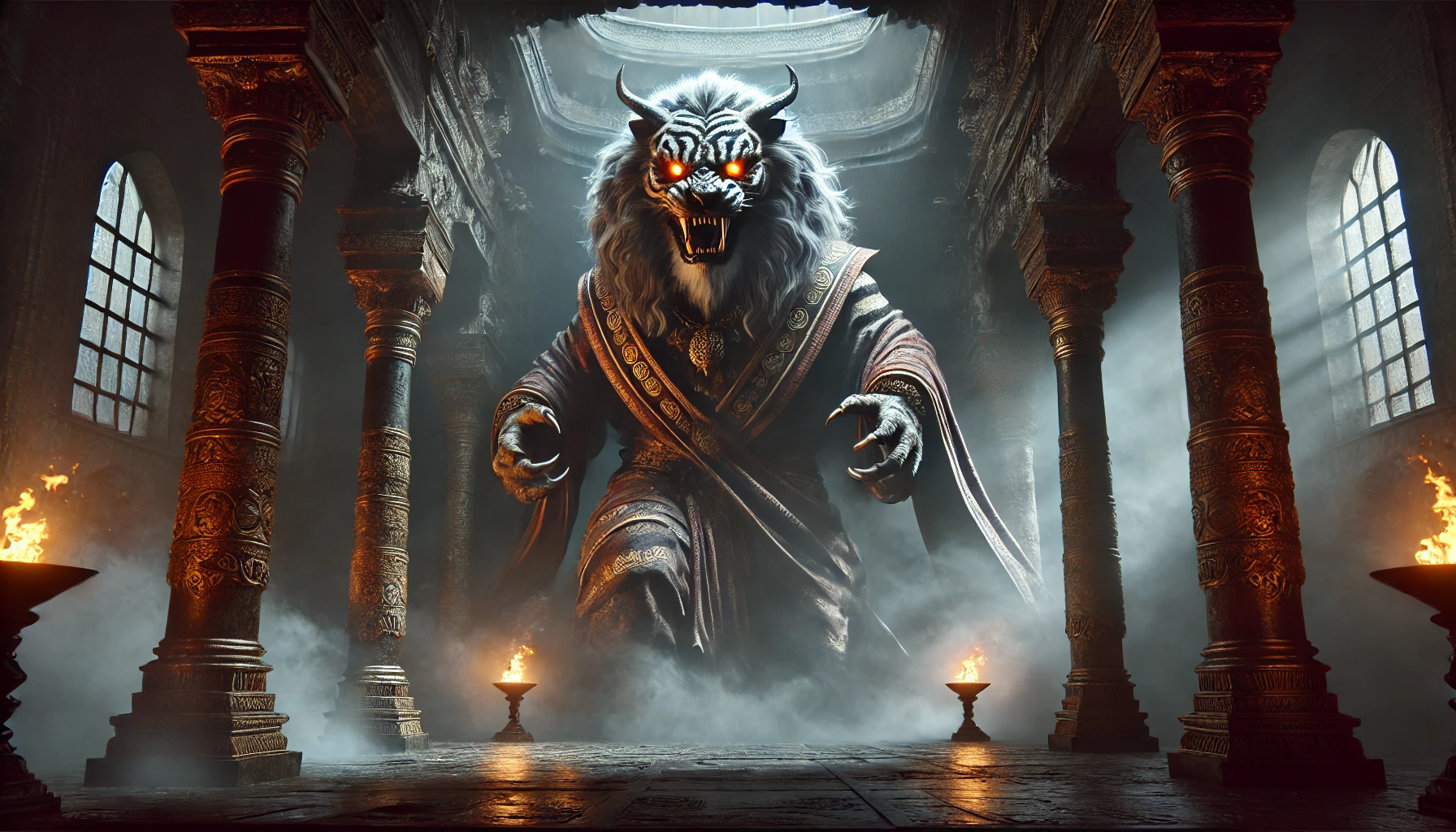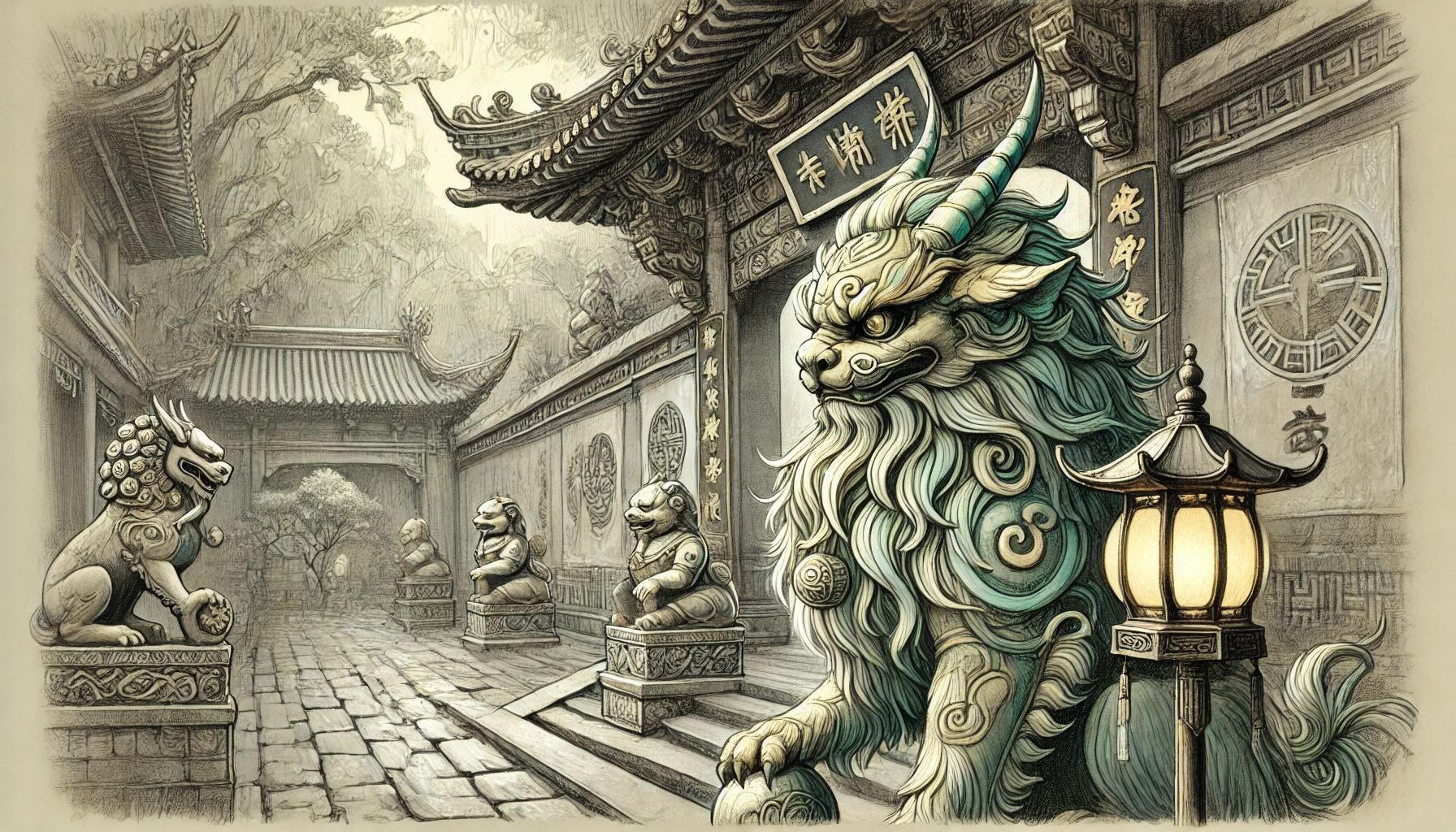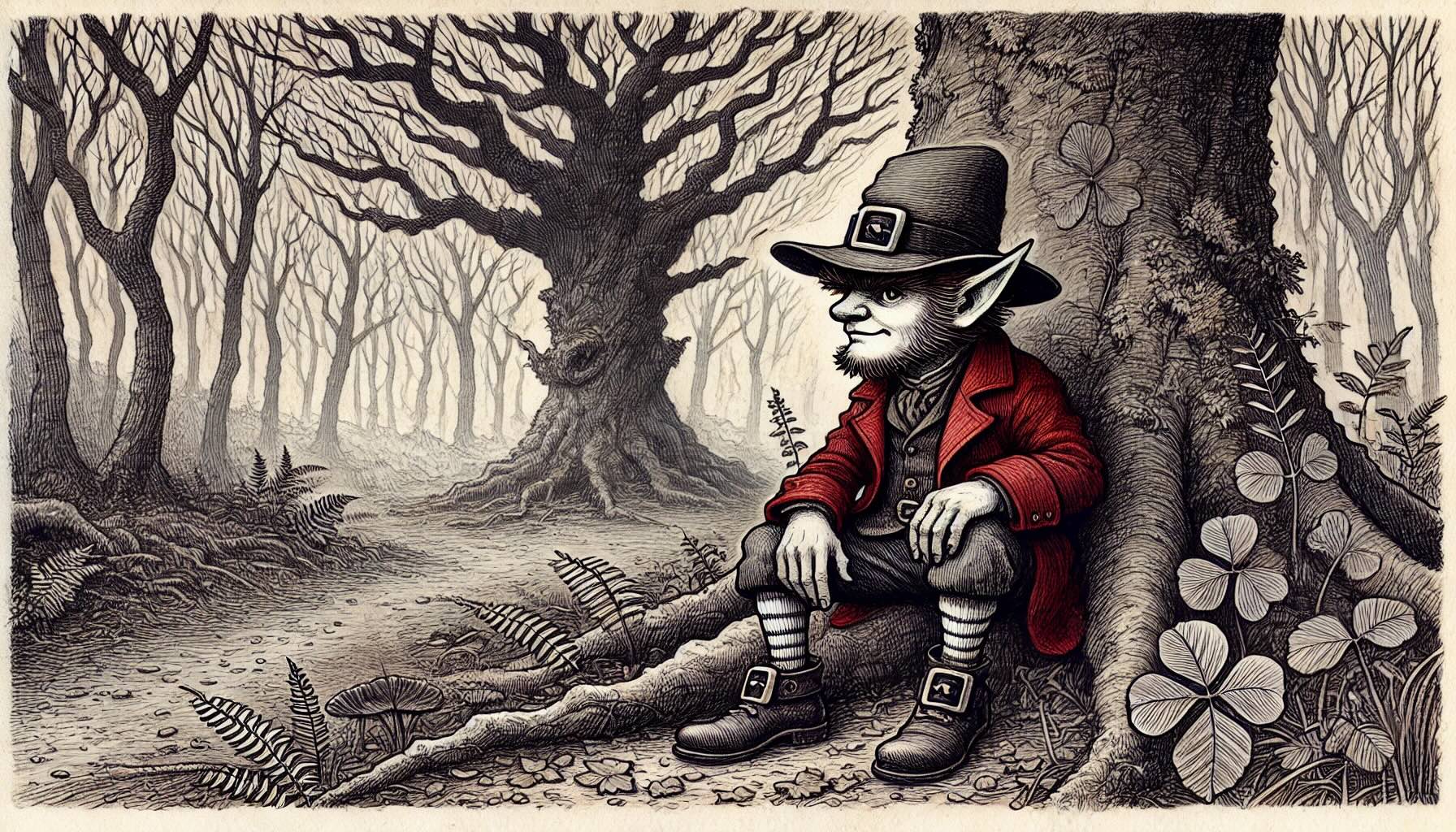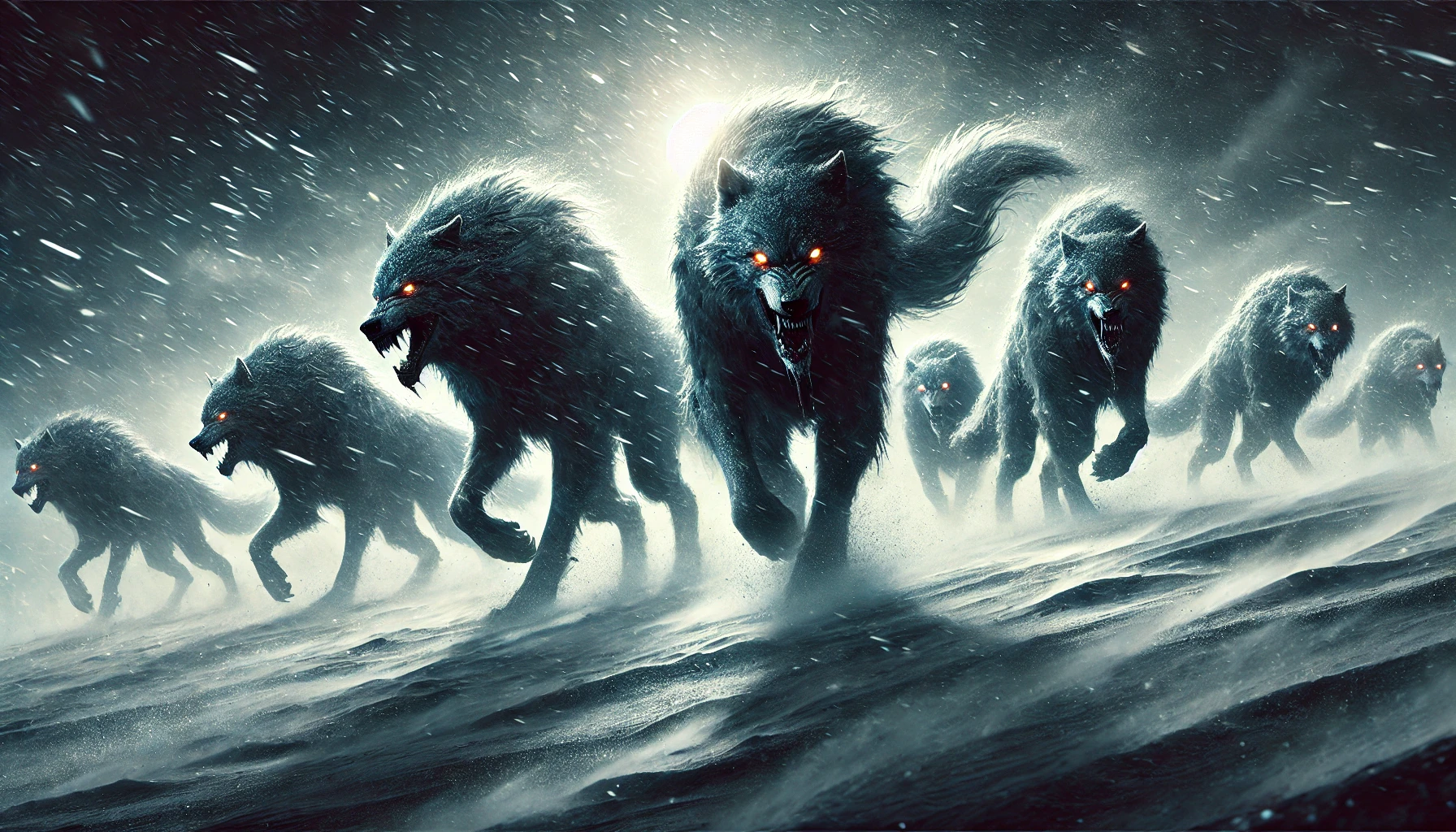A Stranger’s Smile: The Rakshasa’s Deception
There is a saying among those who wander too far from the safety of their homes at night: Some strangers wear a face that is not their own, their gaze too knowing, their smile too practiced. They may look human, they may speak like us, but look closely. A flicker of malice, a glint of hunger beneath the surface—these are the only warnings you’ll get before the Rakshasa reveals itself.
The Many Faces of the Rakshasa
Rakshasas are masters of deception, often appearing as beautiful courtiers, wise sages, or beggars in need—whatever best suits their cruel intent. They walk among humans, their true nature veiled by illusion. But for those who know what to look for, the signs are unmistakable.
In their true form, Rakshasas are terrifying to behold: towering figures with tiger-like features, clawed hands, and eyes that burn with an unnatural glow. Their most infamous trait? Hands that are reversed, palms on the back of their wrists—an eerie detail that betrays them in moments of inattention.
Though many assume all Rakshasas appear as monstrous beasts, variations exist. Some resemble gaunt, shadowy figures, lurking at the edges of firelight, while others take on the grotesque visages of ghouls, feeding on flesh and fear alike. Despite these differences, they share one defining trait: an insatiable appetite for chaos and suffering.
Echoes of the Cursed: Tales of the Rakshasa
Stories of the Rakshasa stretch back beyond memory. It is said that they were once powerful warriors and sages, their souls twisted by greed and cruelty, condemned to walk the world as demons. Others say they are ancient spirits, born of darkness, feeding on the flesh and terror of the living.
One tale tells of King Vikram, a noble ruler who welcomed a wandering monk into his palace. The monk spoke in riddles, his eyes glittering with hidden amusement. When night fell, the monk shed his disguise, revealing the towering, fanged horror beneath. Vikram fought valiantly, but the Rakshasa was too powerful. The next morning, the servants found only scattered bones and the faint scent of sulfur lingering in the air.
Another tale warns of Priya, the Seamstress, a name uttered in hushed warnings. Some say she offered shelter to a weary traveler, unaware that she had invited a Rakshasa into her home. She offered shelter to a weary traveler, unaware that she had invited a Rakshasa into her home. That night, as she sewed by candlelight, the traveler’s voice shifted, deepening into something inhuman. Too late, she realized her mistake. Her screams were heard for miles, but by the time villagers arrived, the house was empty—save for a single thread, stained with blood.
Where Shadows Dwell: The Rakshasa’s Territory
Unlike other monsters that lurk in the wilds, Rakshasas are said to be drawn to civilization—towns, cities, temples, and palaces, where their deception is believed to thrive. They slip into places of power, posing as nobles, priests, or scholars, worming their way into the hearts and minds of the unsuspecting. Some prefer haunted ruins, luring travelers with false cries for help, while others prowl the outskirts of villages, waiting for lost souls to stumble into their grasp.
Their preferred time to strike? Dusk and twilight, when the veil between illusion and reality is at its thinnest.
The Dark Arts of the Rakshasa
- Master Shapeshifters: The Rakshasa can assume any form they choose, mimicking loved ones, priests, or even inanimate objects to trick their prey.
- Hypnotic Gaze: A single look into their glowing eyes can cloud the mind, bending wills and warping reality itself.
- Dark Sorcery: Rakshasas command ancient magic—illusions, curses, and enchantments that render weapons useless and thoughts twisted.
- Immortality Through Trickery: Some accounts suggest that Rakshasas may possess a hidden vulnerability, with their life force tied to enchanted vessels or sacred relics, though such claims remain shrouded in speculation.
How to Outsmart a Rakshasa: Warnings & Defenses
- Watch for the Hands: No matter how perfect their illusion, a Rakshasa’s hands are always reversed. If you suspect someone is not who they seem, watch how they hold objects or gesture.
- Sacred Protection: Holy weapons, blessed fire, and relics of divine energy can wound them. Many warriors carry iron weapons or chant mantras to keep these fiends at bay.
- Never Accept Food from a Stranger: Rakshasas taint food and drink with their magic. A single bite can ensnare the soul, leaving the victim vulnerable to possession.
- The Test of Mirrors: True mirrors do not reflect a Rakshasa’s illusion. If a nobleman’s reflection flickers, run.
- Beware of Too-Good-To-Be-True Offers: If a stranger offers power, wealth, or forbidden knowledge, consider what price they might truly demand.
Many tales tell of those who ignored these warnings, only to vanish without a trace, their names spoken only in fearful recollections.
A Last Caution: Watch Their Hands, Guard Your Soul
It is said that a Rakshasa does not kill for survival, but rather for amusement, according to those who claim to have encountered them. They are deceivers, manipulators, and monsters of the mind, thriving on fear and despair. To outwit them requires more than brute force; it demands cunning, vigilance, and an unwavering grip on reality.
So if you ever meet a stranger who speaks too smoothly, whose eyes never quite match their smile—watch their hands. And, most importantly, never let them feed.



